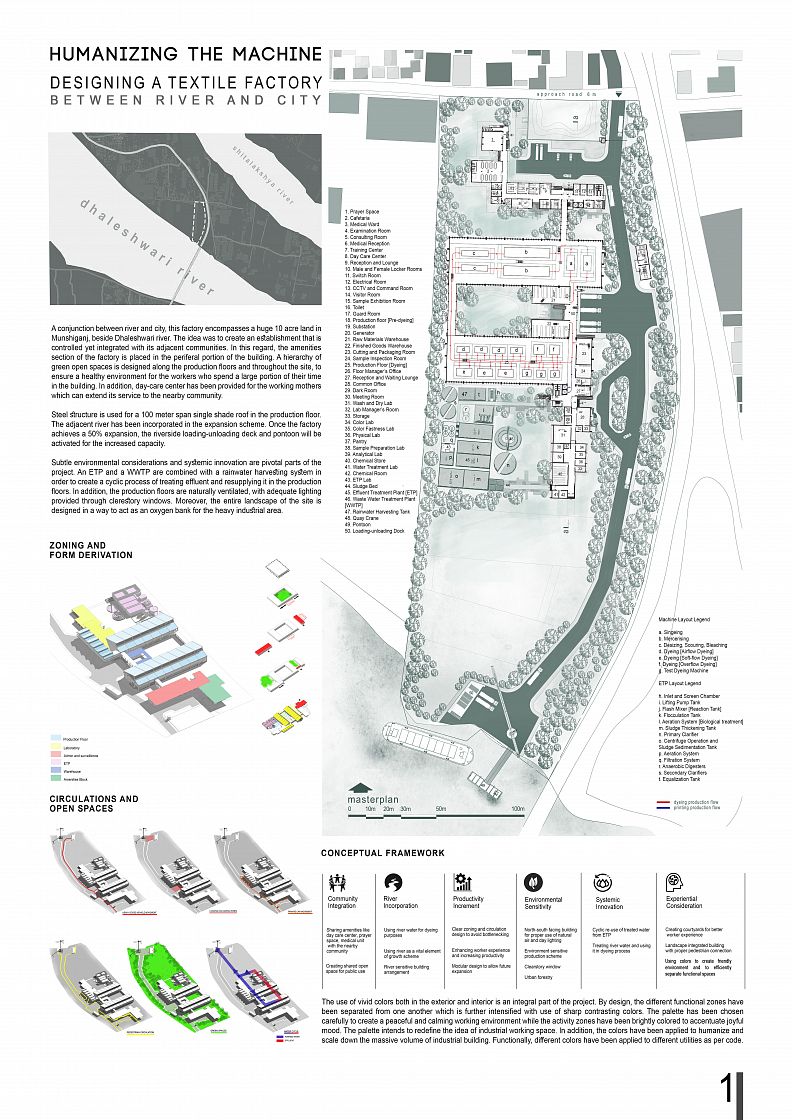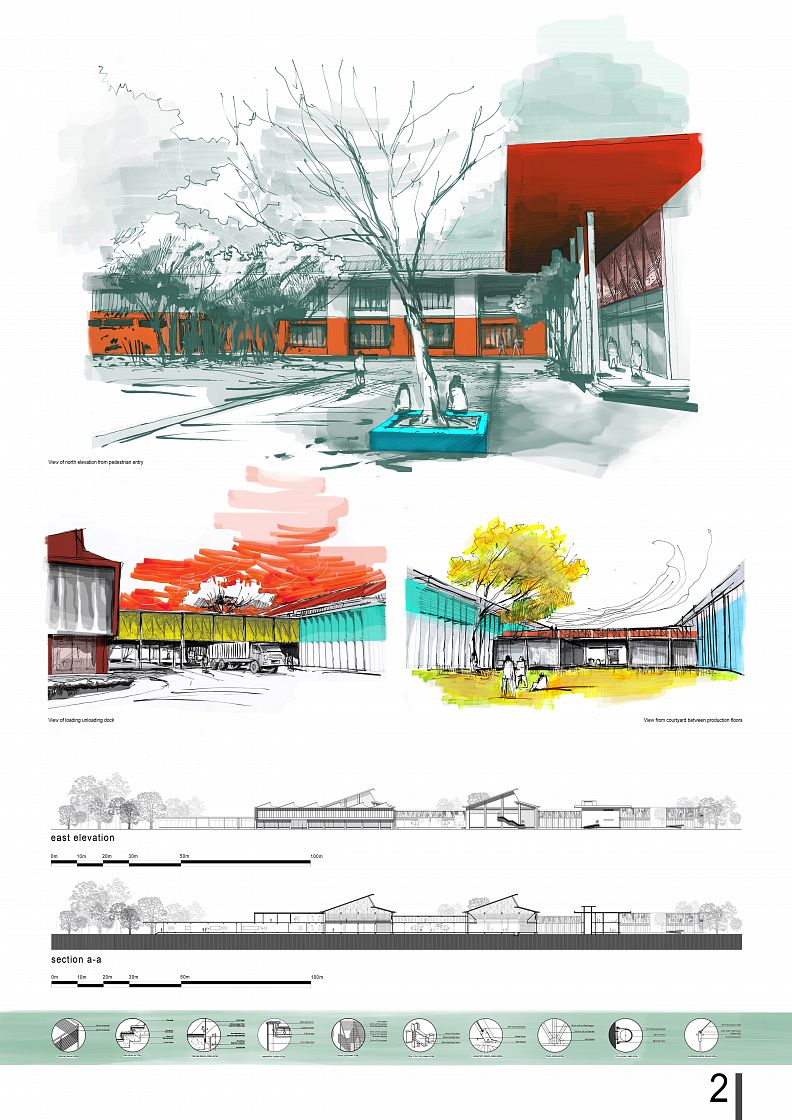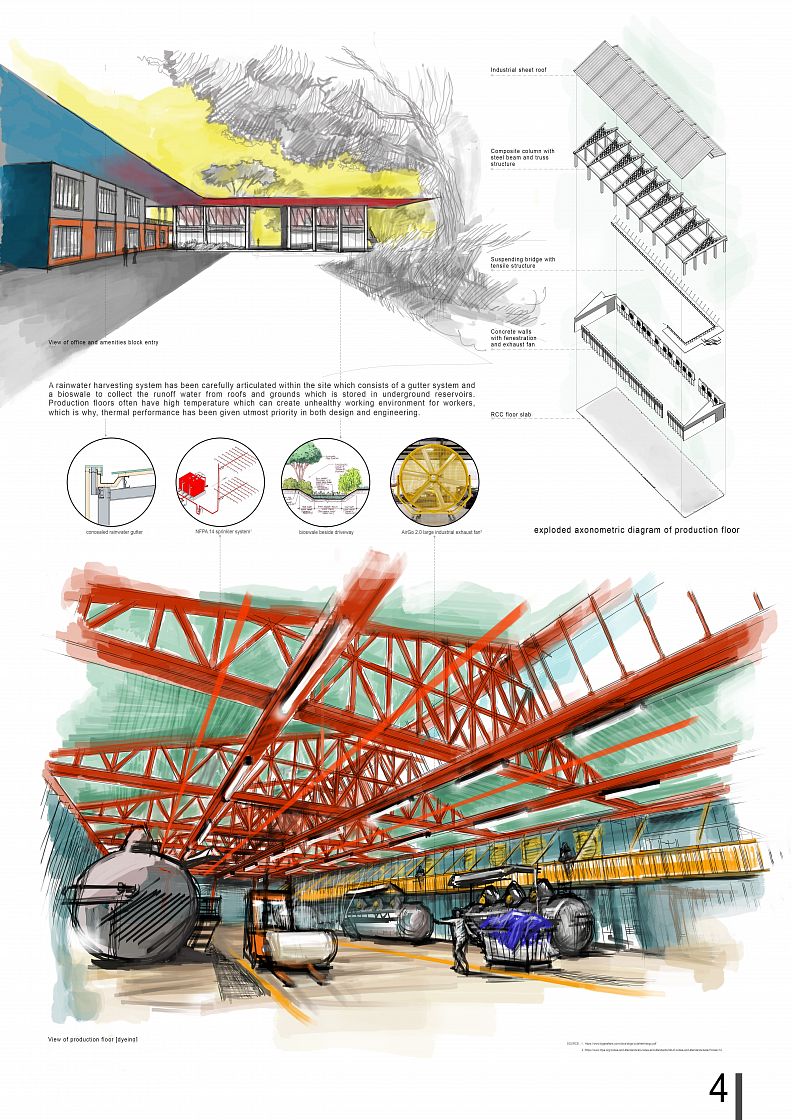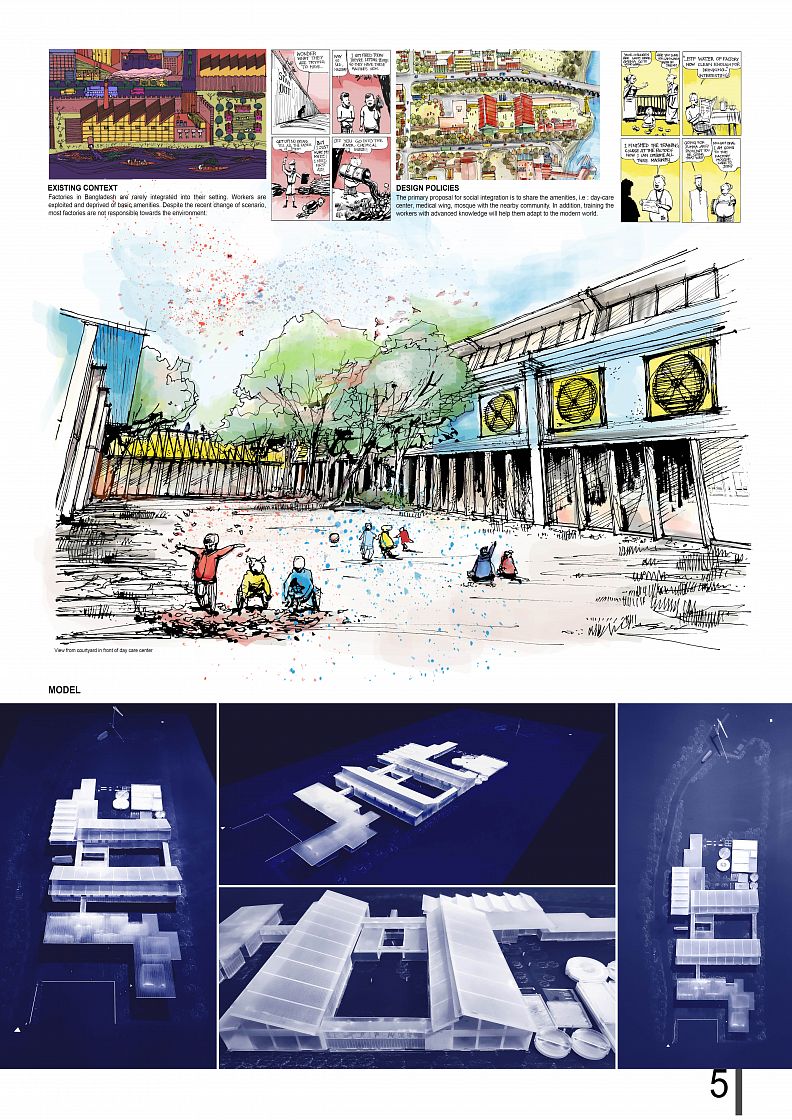Humanizing the Machine : Designing a Textile Factory between River and City

Project idea
A conjunction between river and city, this textile factory encompasses a huge 10 acre land in Munshiganj, beside Dhaleshwari river. The site is surrounded by a small neighborhood. Since it is occupying such an enormous land area within the heart of the city, the idea is to create an establishment that is controlled yet integrated with its adjacent communities. In addition, the design targetted to minimize the impact of toxic industrial waste that makes the adjacent areas unlivable and greatly damages the Dhaleshwary river. Finally, the industry aims to create a healthy workspace for the factory workers and officials by integrating a sensitively designed landscape into the design.
Project description
The amenities section of the factory is placed in the peripheral portion of the building. A hierarchy of green open spaces is designed along with the production floors and throughout the site, to ensure a healthy environment for the workers who spend a large portion of their time in the building. In addition, a day-care center has been provided for working mothers which can extend its service to the nearby community.
Steel structure is used for a 100 meter span single shade roof in the production floor. The adjacent river has been incorporated into the expansion scheme. Once the factory achieves a 50% expansion, the riverside loading-unloading deck and pontoon will be activated for the increased capacity.
A rainwater harvesting system has been carefully articulated within the site which consists of a gutter system and a bioswale to collect the runoff water from roofs and grounds which is stored in underground reservoirs. Production floors often have high temperatures which can create an unhealthy working environment for workers, which is why thermal performance has been given utmost priority in both design and engineering.
Technical information
Subtle environmental considerations and systemic innovation are pivotal parts of the project. An ETP and a WWTP are combined with a rainwater harvesting system in order to create a cyclic process of treating effluent and resupplying it in the production floors. In addition, the production floors are naturally ventilated, with adequate lighting provided through clerestory windows. Moreover, the entire landscape of the site is designed in a way to act as an oxygen bank for the heavy industrial area.






